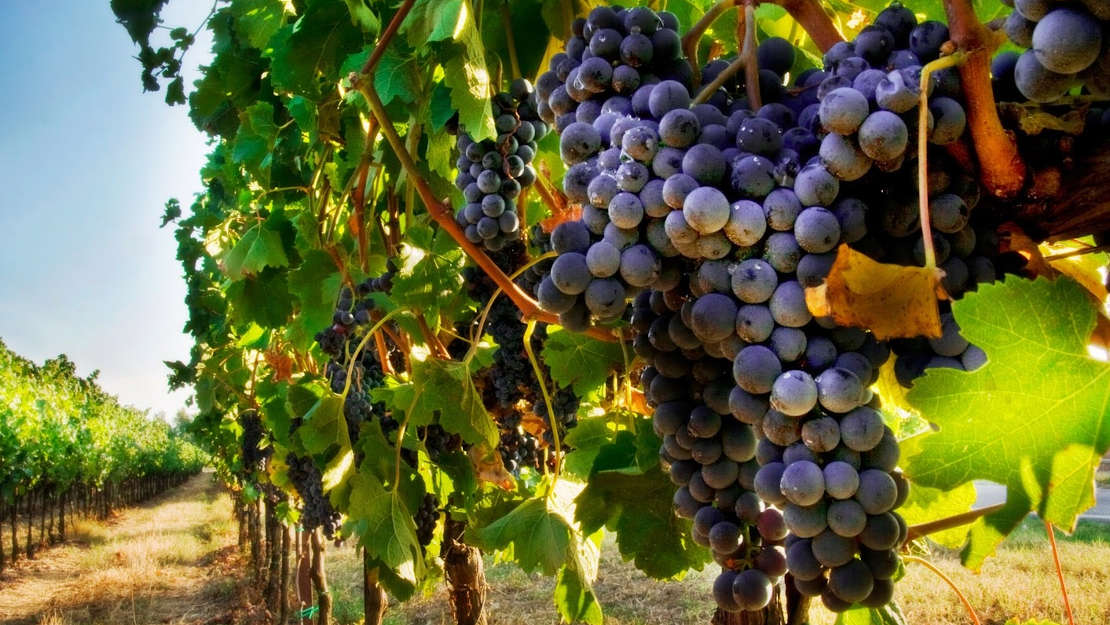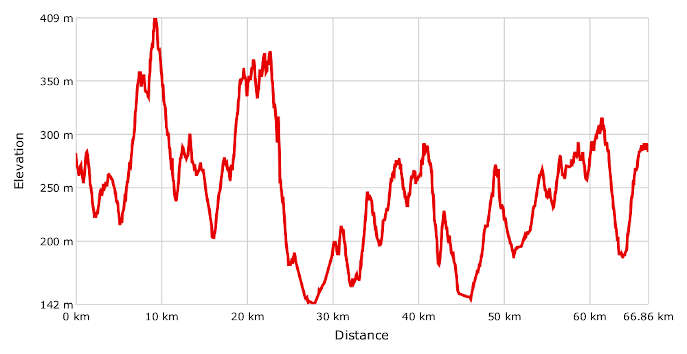
- Bike: trekking/mtb
- Difficulty: ****
- Distance: 77 km
- Altitude difference: 204 m
- Total ascent: 1502 m
- Total descent: 1502 m

In 2015, Fiab Monferrato Bike, an Italian cycling association, began creating a network of bike routes dedicated to the great wines of Piedmont, for tourists and connoisseurs. The aim was to promote the main local DOC wines through itineraries following the roads among the vineyards that yield those precious grapes.
But why is it called the DOC tour? The association for promoting cycling tours in Monferrato is based in Casale Monferrato, hometown of the father of DOC, senator Paolo Desana.
Paolo Desana, born in Casale Monferrato on 7 January 1918, spent years as a local and provincial political activist, before being elected senator in 1958 in the constituency of Casale and Chivasso, a role he kept until 1963. He was the biggest promoter and first signatory of Law 930/1963 regarding DOC (denominazione di origine controllata) denomination of controlled origin for Italian wines. In 1966 he became president of the national committee for the protection of DOC wines, and remained so until 1989. He died on 19 January 1991 in Casale Monferrato, where his son continued running the Comitato Casale Monferrato Capitale della DOC. The aim of this committee is to promote the town as the capital of DOC, both in Italy and abroad, and preserve the history, literature and local culture linked to DOC wine.
Since 2015 they have been organising bike trips for learning about, promoting and tasting classic Monferrato wines. The first DOC tour, inevitably, began and ended right in Casale Monferrato, and sought to promote the DOC wine Barbera Monferrato Superiore, which since 2008 has been labelled DOCG (DOC garantita), denomination of controlled and guaranteed origin.
Barbera del Monferrato Superiore is a wine made in the provinces of Asti and Alessandria. Monferrato Casalese is one of the main wine-growing areas in Piedmont. Production is concentrated in 34 little municipalities: 17 are DOC, of which five exclusive. Just eight municipalities in Monferrato Casalese produce around a quarter of all the Barbera DOC in the province (first is Rosignano, with 6.5%, followed by Vignale, with 5.74%). Monferrato Casalese is home to more than 300 producers, six wine-growers' cooperatives and a regional winery.
Most vineyards are given over to the two most traditional varieties in the area, Barbera and Grignolino.
The vines of Barbera del Monferrato Superiore grow on hills rich in limestone and stand out for their structure and intense colour. Producers, especially in the area between Vignale and Casale Monferrato, are keen to offer great wines embodying local values and flavours that will charm even the most demanding palates. Superiore wine is a type made from more mature grapes, left in the cellar for at least a year and in wooden barrels for at least six months. Made up of a minimum of 85% Barbera grapes and a maximum of 15% Freisa and/or Grignolino and/or Dolcetto, this wine has been in the area since 1798 and today makes up about half of all wine production in Piedmont.
But let's set out on this route, that will give you the chance to visit various producers and stop for some tastings. It's one of constant ups and downs, but none of the ups are impossible!
Start at the Paleologi castle in Casale Monferrato, hometown to the regional winery. After the conventional tour around the old town centre, start the route with an uphill stretch on a slope of 20% on Via Fratelli Sosso (or Strada Salita Sant’Anna, which is equally challenging). Once you're at the top, you have a view over the town, river Po and Vercelli plain. Carry on to San Giorgio Monferrato, where, from the little parish church, you can enjoy a view of the hills, cloaked in vines, that are the centrepiece of the route. Go downhill in the direction of Rosignano Monferrato, but before reaching it, turn right for the Montalino and Cornalasca area. At the top of the hill, it's worth stopping again for the view over San Giorgio Monferrato.
Carry on up to Rosignano Monferrato, where you can stop by the sign for Tenuta Vicara, a producer of fine wines, on the giant bench named after the Rosso Grignolino variety. Enjoy the wide view from this choice spot. Carry on to the centre of the village and down, then turn right off the tarmac and up a steep road through Barbera vineyards to Cella Monte. Once you've seen the village, which has been a member of I Borghi più belli d’Italia ('Italy's most beautiful villages') since 2018, go along the track to the farm Cascina Varocara, then the hamlet of Coppi. Carry on to the junction with the track, around 19 km into the route. Pass by vineyards and go down into the Ghenza valley. Turn right here to reach the village of Moleto. At the Romanesque church of San Michele, which sits on a grassy hillock, you can enjoy another spectacular view. Go through the beautiful village with its houses made of calcarenite stone and up the brief stretch to Ottiglio. At the top of the hill, turn right onto a track looking over the Frati valley. Carry on to Ottiglio, whose little lanes will bring you to Via Montiglio, which runs up to the road to Olivola, also blessed with a view. Leave this pretty little village, surrounded by endless vines, and go up then right to its cemetery. Go right again onto a little road that quickly turns into a track and brings you to Frassinello Monferrato. From the castle in middle of the village, go down and on in the direction of Lignano, turning right after about 800 m onto another track past a farm stay and down to the SP 50. Turn left at the stop sign, then right onto another track to Cà Prano, then Vignale Monferrato. Once you've crossed the town, follow the signs for San Lorenzo, go down and join the SP 72 and climb to Cuccaro. Go left at the little roundabout and take Via Montalto, then the scenic road to Lu Monferrato. Once in Lu, continue in the direction of Mirabello Monferrato and, after a descent through vineyards to flat country, turn left onto a gravel road. Follow the GPX track to San Maurizio di Conzano, then over a series of tracks to Terruggia, and finally a green road to San Germano, a village near Casale. Cross the SP 31 and pass Cantone Lumelle. Follow the Lanza canal to Casale Monferrato, the very end of the route.
